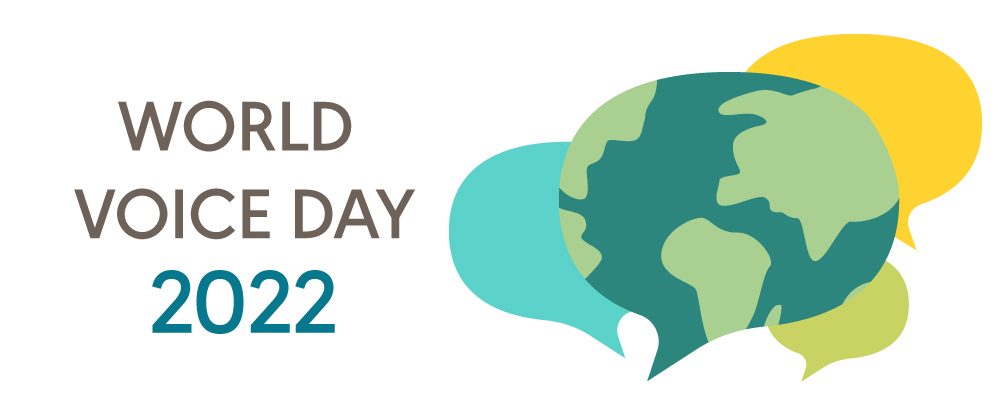Approximately 1 in 13 adults in experiences a voice problem every year in the United States. For millions of Americans of all ages, these problems may be persistent voice disorders. ASHA describes a voice disorder as “when voice quality, pitch, and loudness differ or are inappropriate for an individual’s age, gender, cultural background, or geographic location.”
Speech-language pathologists (SLPs) can help assess, diagnose, and treat voice disorders. In recognition of World Voice Day, an annual observance that turns 20 years old this year, we’re showcasing some of the latest articles on voice from across the ASHA Journals.
The Latest on Voice
Relationships Among Personality, Daily Speaking Voice Use, and Phonotrauma in Adult Female Singers: Singers make up 11%–29% of the population in voice clinics, and many have developed vocal fold tissue damage such as nodules. This article looks at the external factors—such as daily voice use, vocal trauma, and personally traits—in singers with and without vocal nodules to find the qualities of a vocally healthy singer.
Development, Validation, and Reliability of the Teacher-Reported Pediatric Voice Handicap Index: In this article, the authors developed a teacher-reported voice measure. With this and other tools, they hope to learn more about the effects of voice disorders on children and potentially involve teachers in the screening process.
Listening to Gender-Diverse People of Color: Barriers to Accessing Voice and Communication Care: Only a small fraction of gender-diverse people of color are accessing voice services that may interest them. This study looked at the viewpoints of gender-diverse people who are Black, Indigenous, and people of color (BIPOC) discussing barriers that are preventing them from receiving care.
Intensive Voice Treatment (Lee Silverman Voice Treatment [LSVT LOUD]) for Children With Down Syndrome: Phase I Outcomes: Most parents of children with Down syndrome report having trouble understanding their children at least some of the time. This study looked at the effect of an intensive voice treatment on children with Down syndrome, measuring both therapeutic gains and potential adverse effects on these children.
Clinical Cases From Perspectives
Perspectives of the ASHA Special Interest Groups specializes in articles bridging research and practice. The four case studies below were chosen to provide clinicians with some examples of what they may encounter while working with clients who have voice disorders.
Clinical Case Study: Muscle Tension Dysphonia: This case study involving a patient diagnosed with muscle tension dysphonia provides an opportunity to practice conducting an auditory–perceptual assessment and acoustic voice assessment on a provided sample.
Clinical Case Study: Space Occupying Vocal Fold Lesions: Authors provide acoustic, aerodynamic, auditory-–perceptual, and stroboscopic assessment of a patient with bilateral mid-membranous vocal fold lesions.
Laryngeal Endoscopic Imaging: Fundamentals and Key Concepts for Rating Selected Parameters: This article (a) describes the laryngeal endoscopic imaging techniques of videoendoscopy and videostroboscopy and (b) discusses their use and limitations in clinical practice.
Unilateral Vocal Fold Paralysis: The “Trifecta”—Dysphonia, Dysphagia, and Dyspnea: Follow a clinical case to aid in perceptual, videostroboscopic, acoustic, and voice assessment—as well as goal and treatment planning.
More Voice Resources
These articles are just a small sample of the articles on voice disorders published every year in the ASHA Journals. To stay up to date with the latest, you can check out the Voice and Voice Disorders Topic Page, which includes more than 1,000 articles!
If you are a researcher or a clinician with a specialty in voice, you may want to consider joining ASHA’s Special Interest Group 3, Voice and Voice Disorders. In addition to the case studies above, SIG 3 maintains an archive of more than 400 articles in Perspectives, with new articles publishing regularly—all of which are free for SIG affiliates.
Thank you for spending some time with us in recognition of World Voice Day on April 16. You can learn more about ASHA’s efforts during World Voice Day on the ASHA Leader Live post. Be sure to share some resources from ASHA today to help spread awareness of voice disorders and how ASHA members can help address them!







